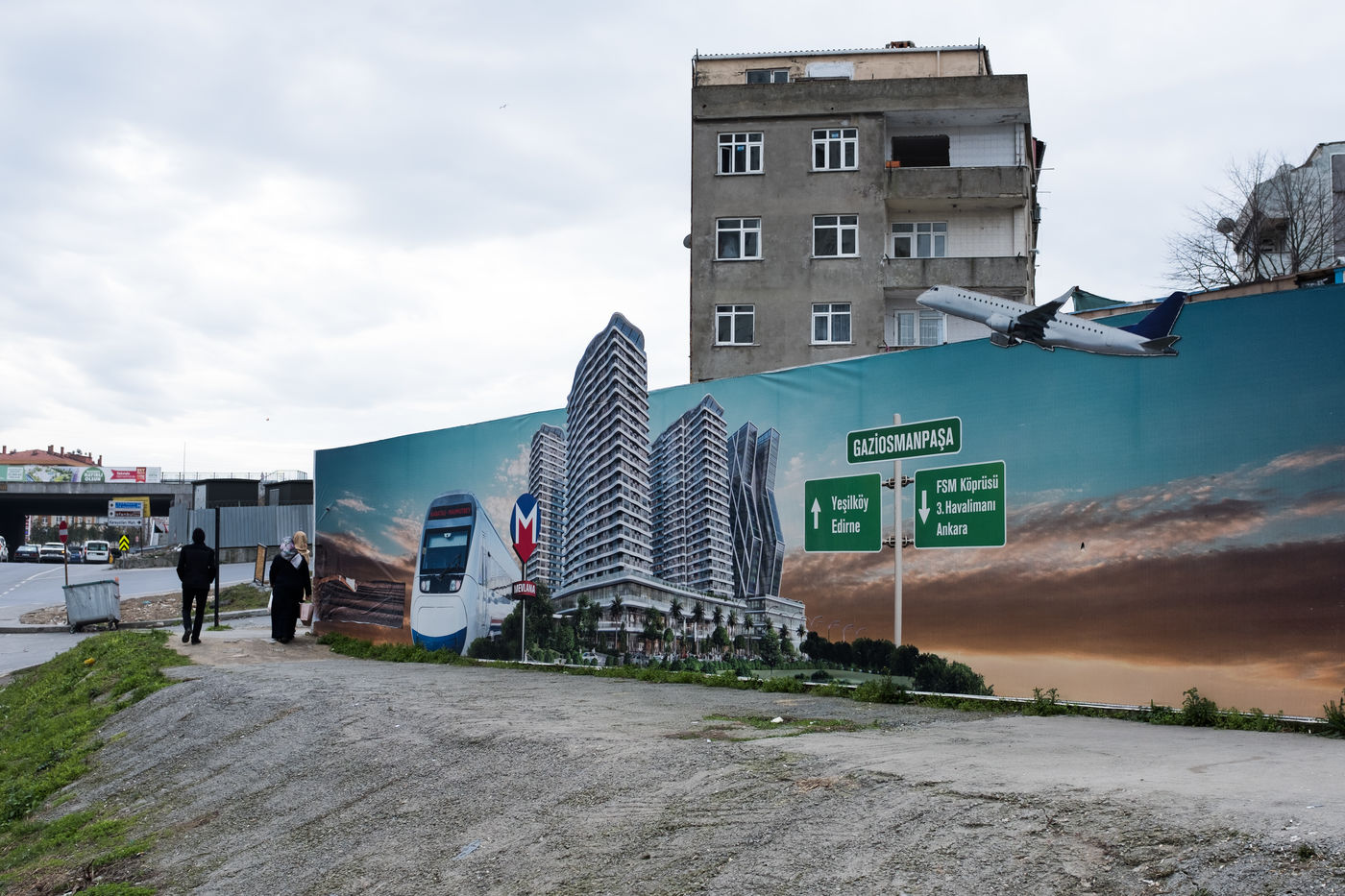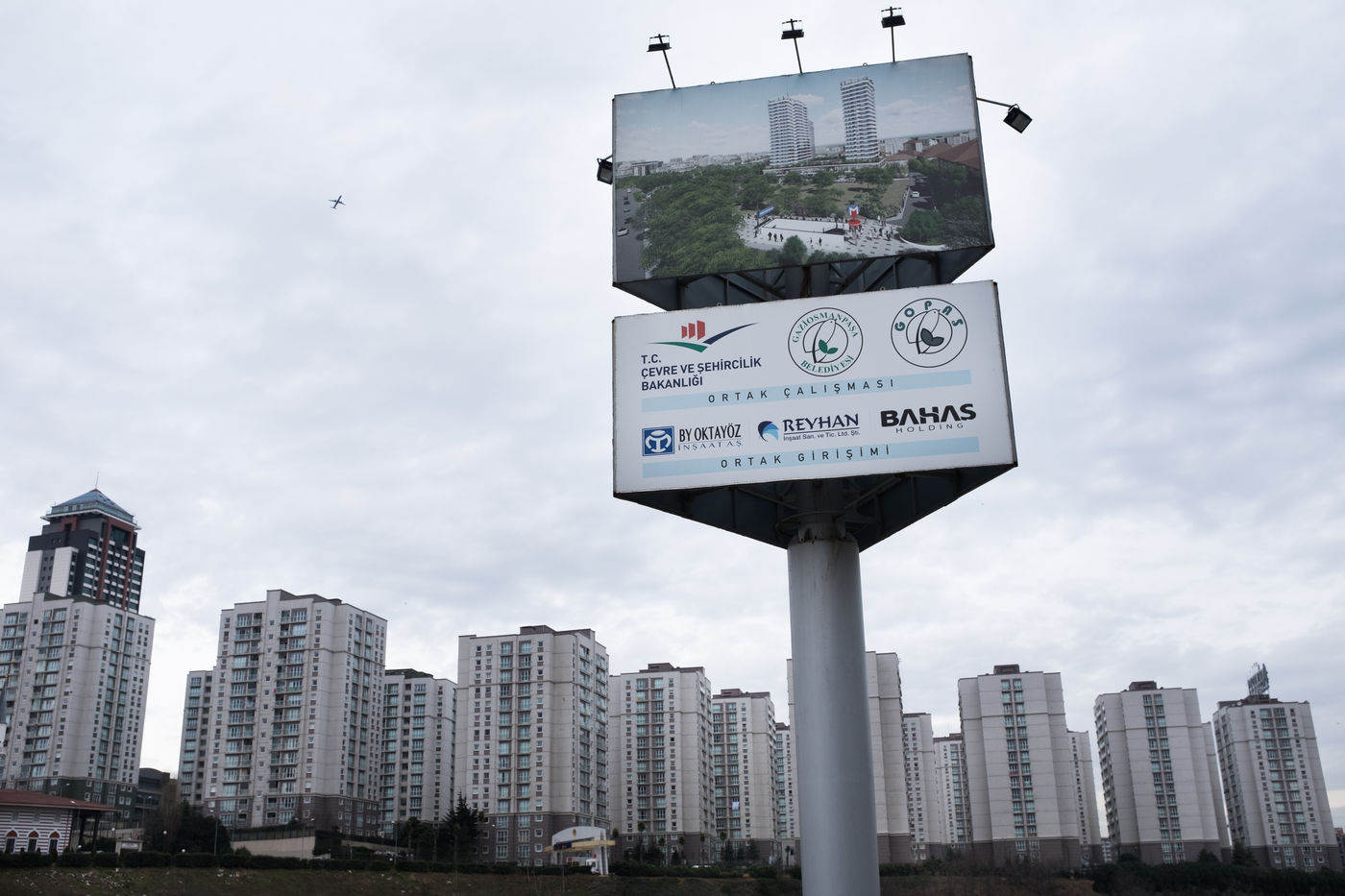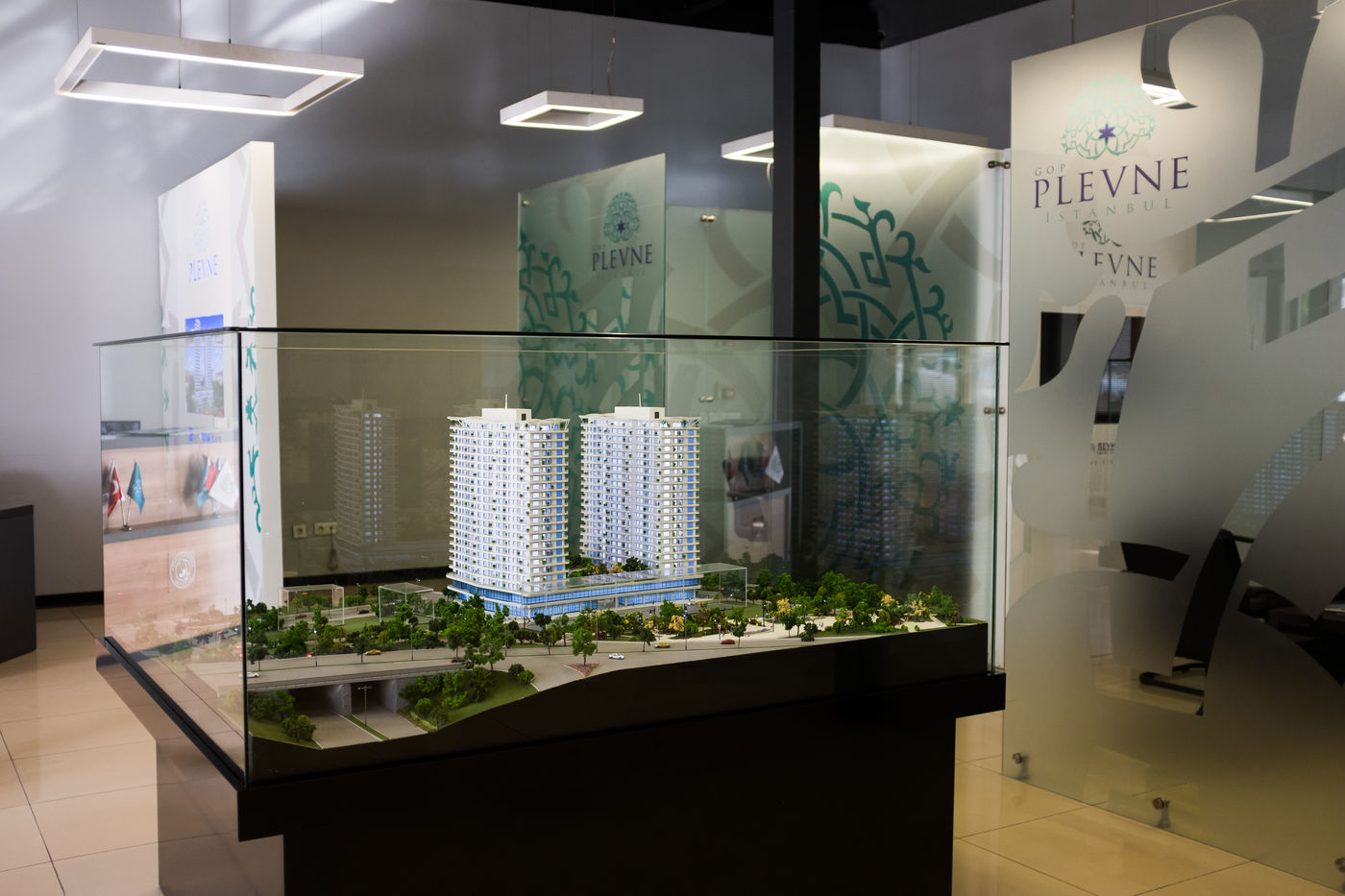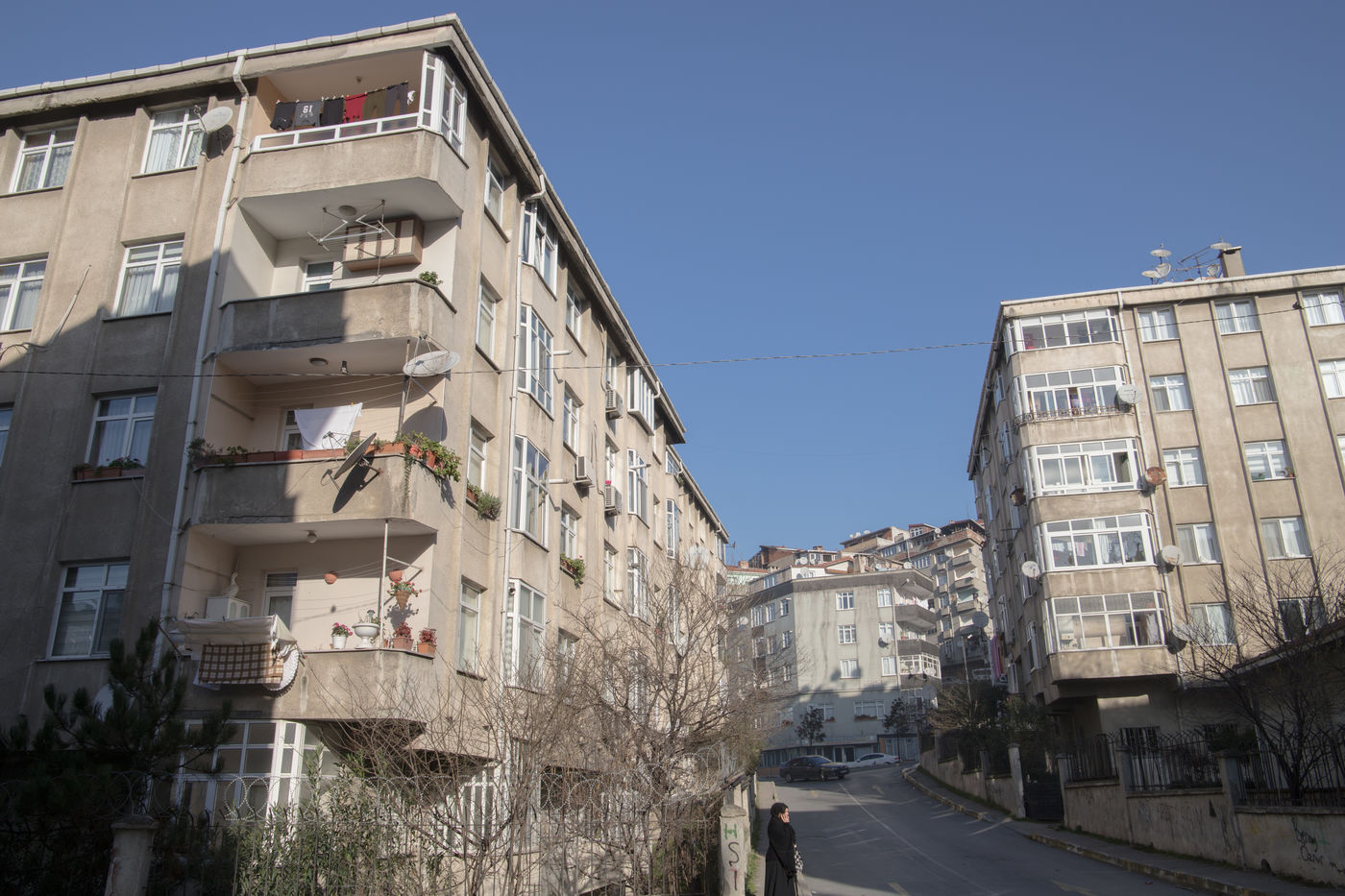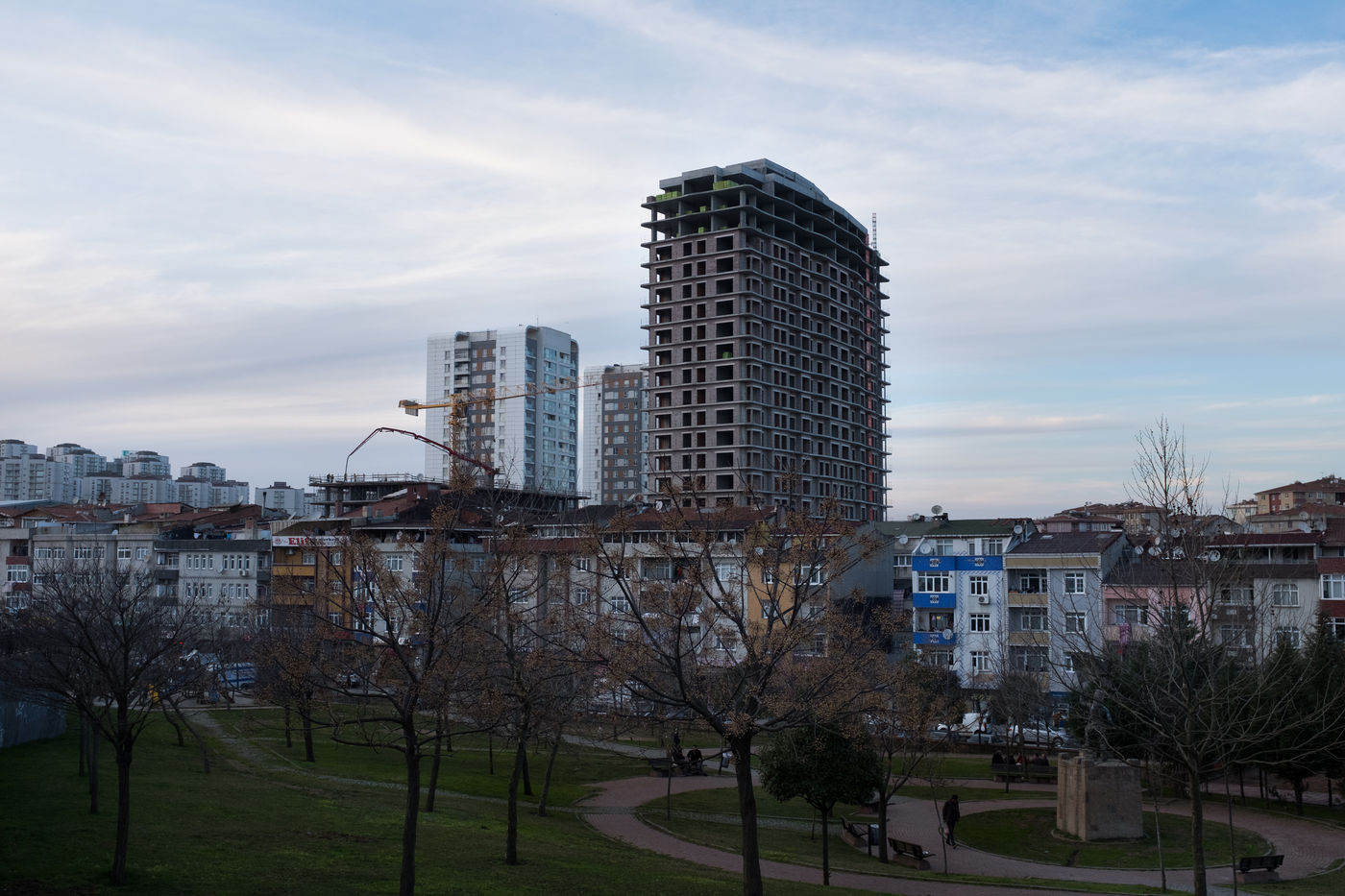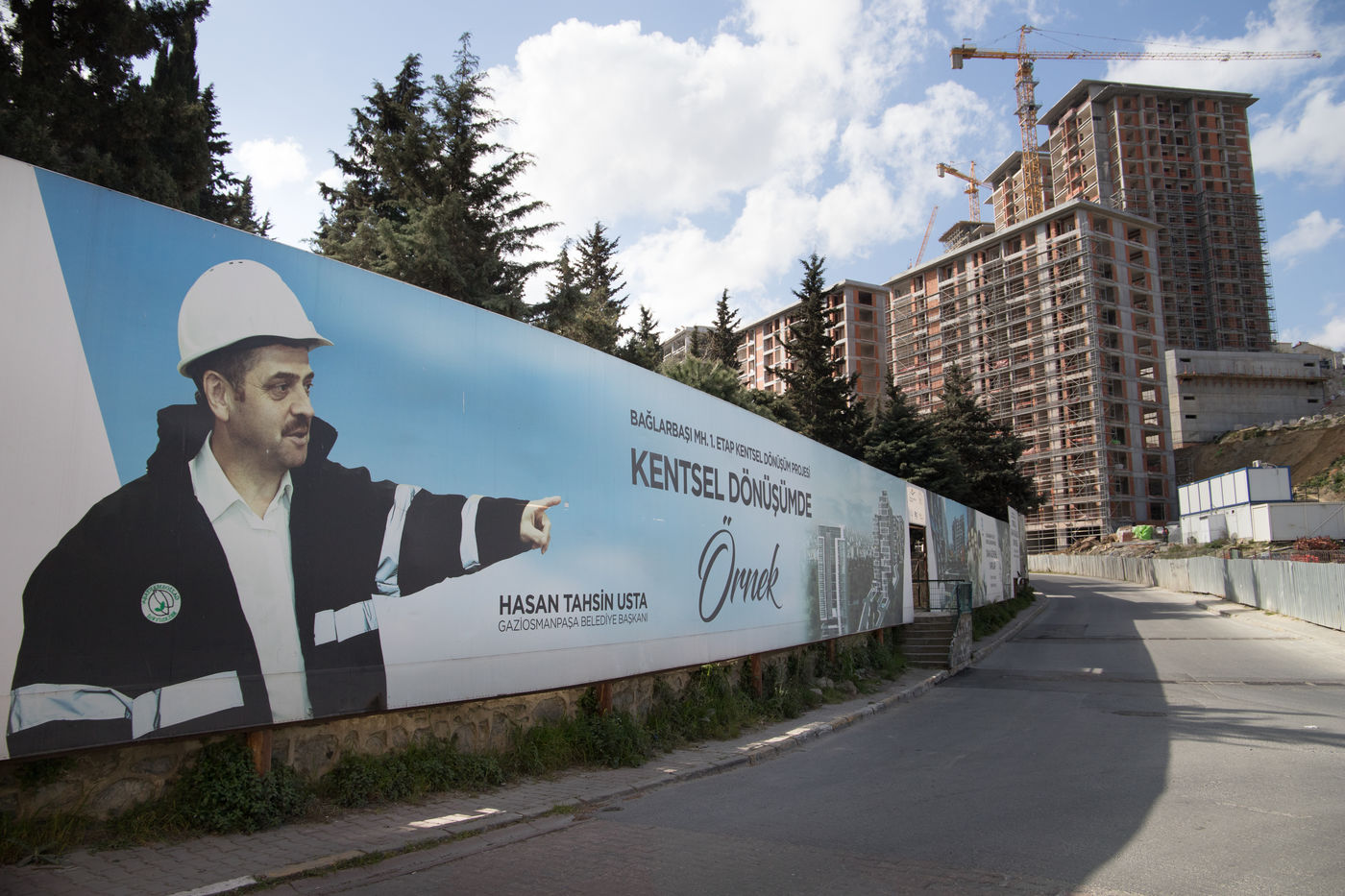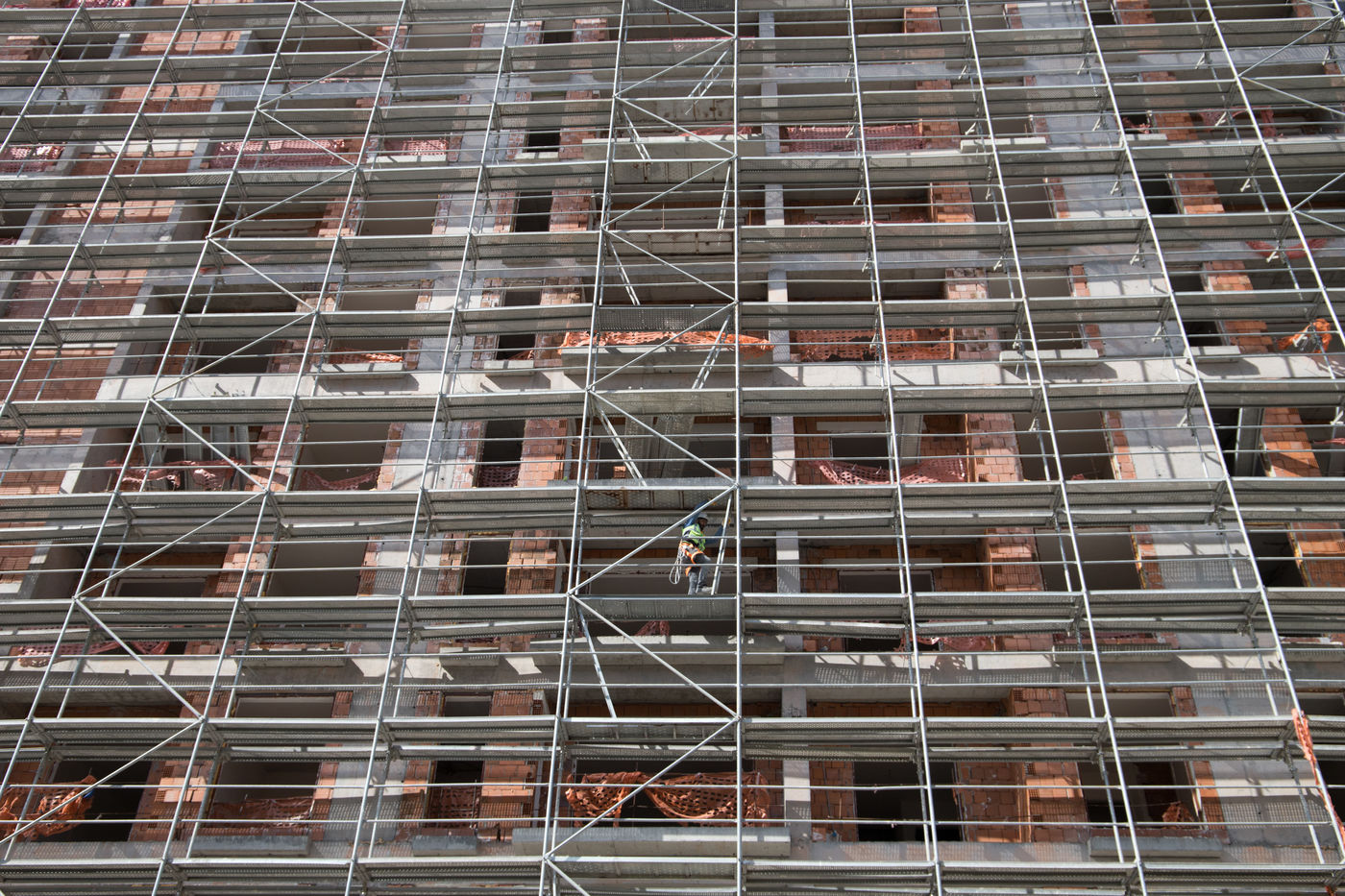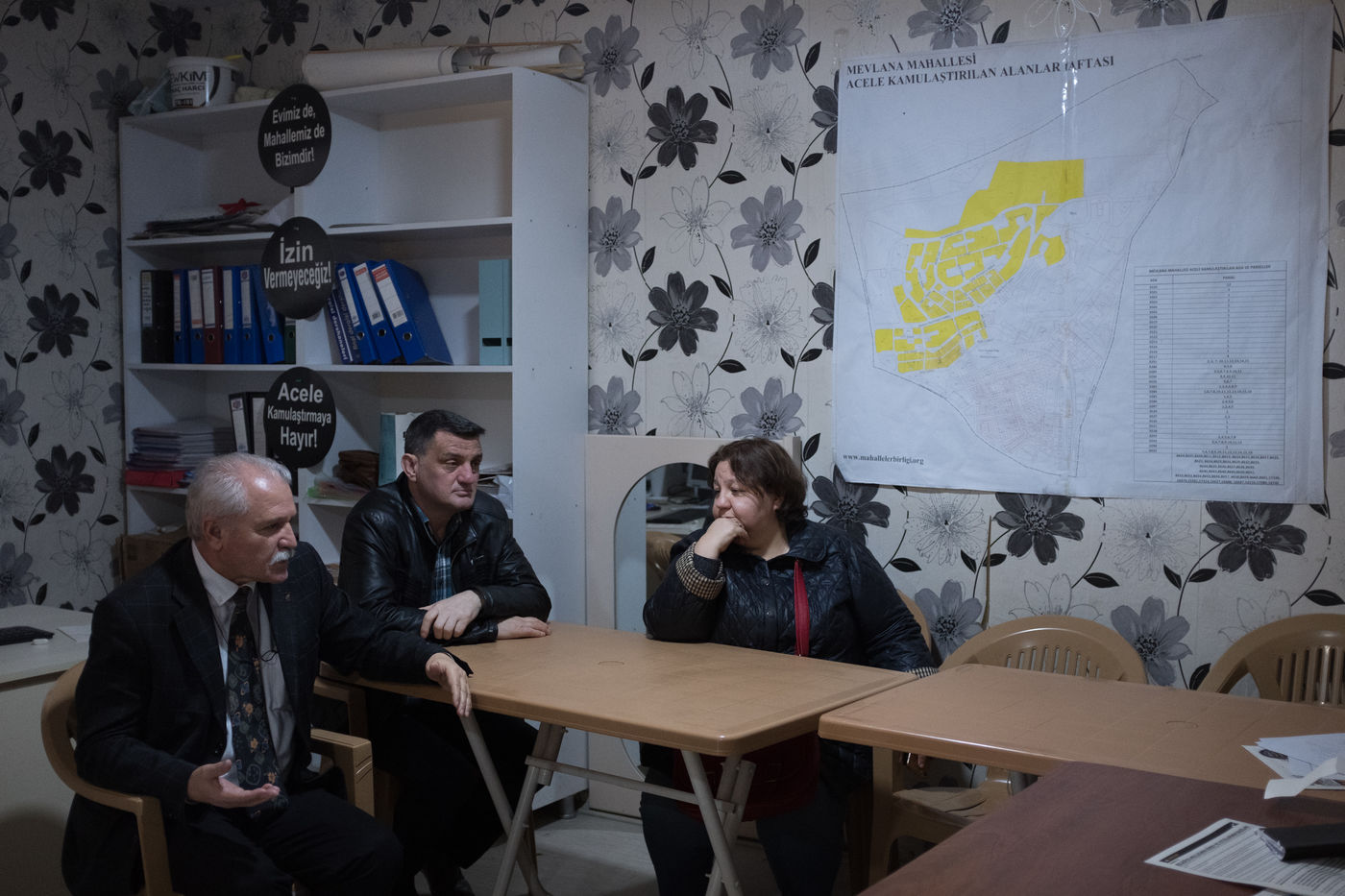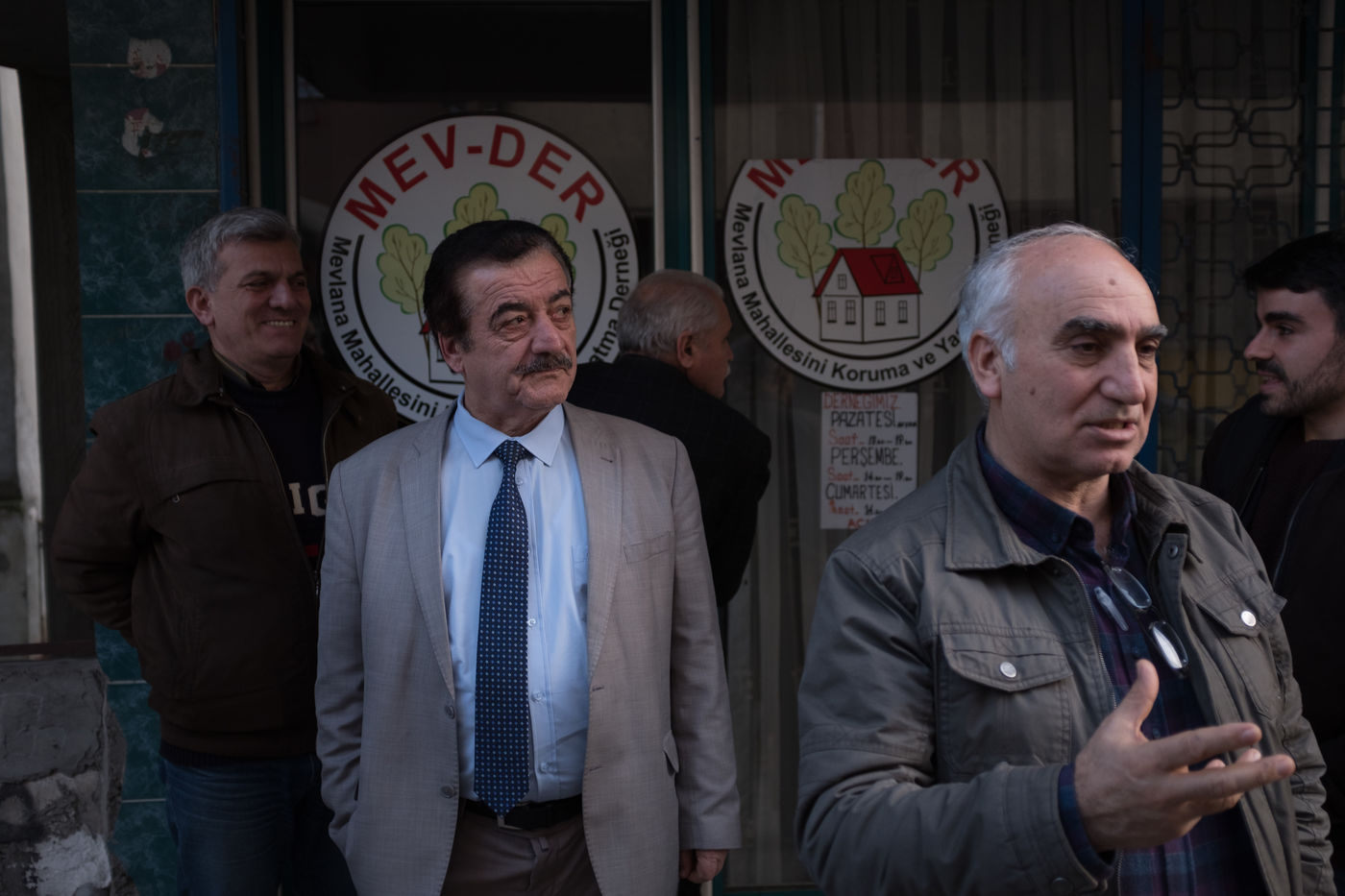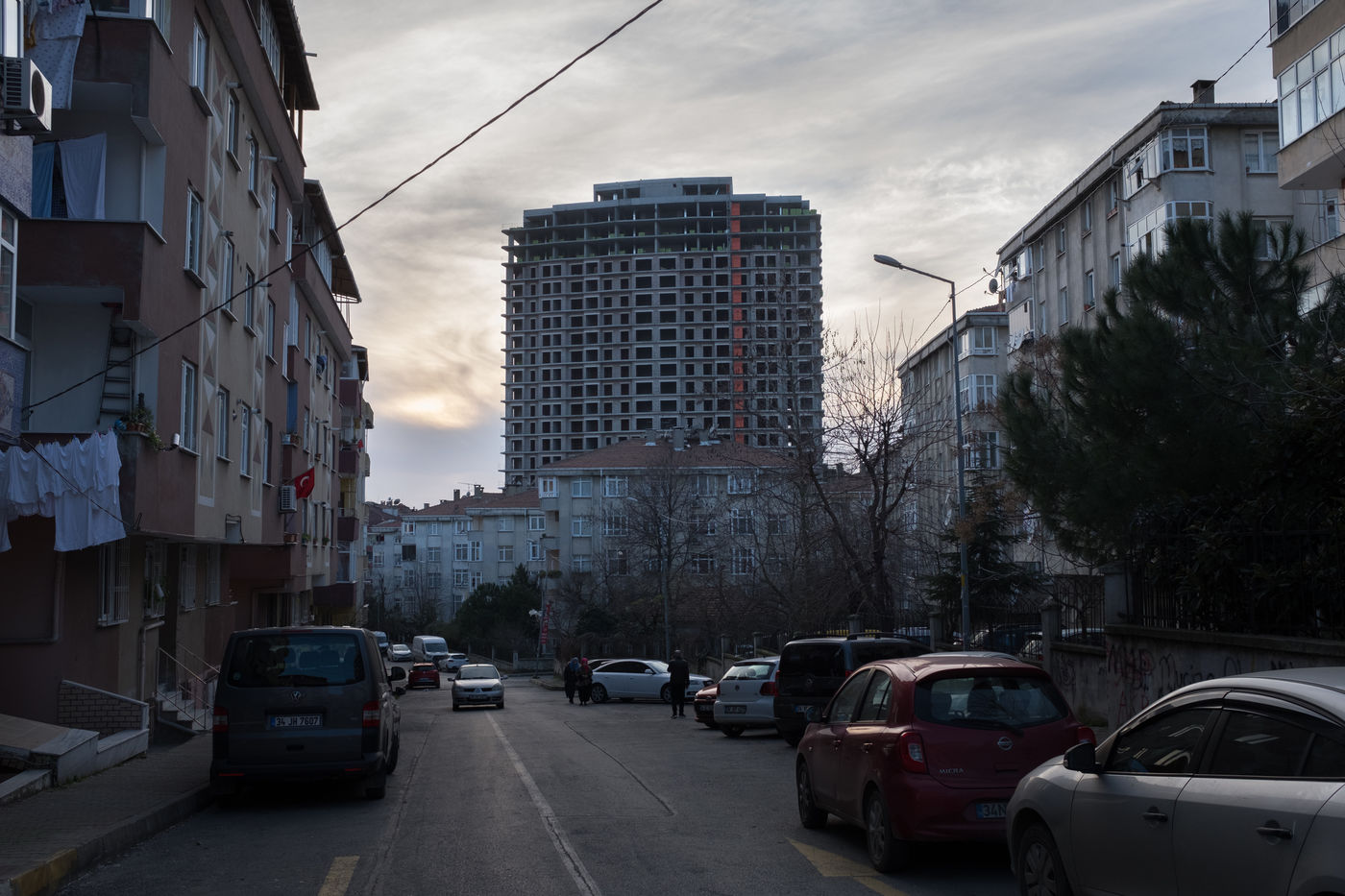Transformation urbaine a Istanbul
Projet photo sur la transformation urbaine dans l'arrondissement de Gaziosmanpasa a Istanbul.
L'arrondissement de Gaziosmanpasa, cree en 1963, a connu une forte croissance demographique et urbaine a partir des annees 1950, alimentee par des populations migrantes des Balkans puis par l'arrivee de nationaux venus des zones rurales. L'installation rapide et non planifiee de ces populations ont entraine la construction d'habitations informelles, sans infrastructures. En ce sens, l'arrondissement de Gaziosmanpasa est vise par de nombreux projets de transformation urbaine, justifies par la << necessite de veiller a ce que les batiments a risque soient renouveles le plus vite possible >>, par la lutte contre le << developpement excessif de zones residentielles insalubres >> et << sans titre de propriete >>. Ce sont donc a la fois les lois sur l'habitat informel et sur le risque sismique qui sont mobilisees pour legitimer la transformation urbaine de l'arrondissement. Les projets s'etalent sur pres de 37% de son territoire, et concernent 13 quartiers et 18 zones a differents degres de risque. Ces projets urbains font neanmoins l'objet de contestations. En effet, meme si les acteurs publics installent dans chaque quartier vise par la transformation urbaine un bureau de renseignement pour engager des negociations foncieres a l'amiable (et limiter les expropriations), le projet ne fait l'objet d'aucune consultation. De plus, ces projets reposent sur des analyses tres limitees des conditions physiques, economiques et sociales des zones visees. Si le risque sismique est reconnu, les habitants, notamment par l'intermediaire d'associations, critiquent l'absence de participation citoyenne dans les processus decisionnels et le recours systematique a la destruction. Par ailleurs, les conditions dans lesquelles s'effectuent les projets urbains conduisent a des expulsions forcees ou a des deplacements temporaires puis permanents, du fait des ressources financieres limitees des habitants et/ou de l'absence de titres de propriete en bonne et due forme.
Urban Transformation in Istanbul
Photo project on urban transformation in the district of Gaziosmanpa?a in Istanbul.
The Gaziosmanpa?a district, established in 1963, experienced strong demographic and urban growth from the 1950s onwards, fuelled by migrant populations from the Balkans and then by the arrival of nationals from rural areas. The rapid and unplanned settlement of these populations led to the construction of informal settlements without infrastructure. In this sense, the district of Gaziosmanpa?a is the target of many urban transformation projects, justified by the "need to ensure that buildings at risk are renewed as quickly as possible", by the fight against the "excessive development of unhealthy residential areas" and "without title deeds". It is therefore both the laws on informal housing and on seismic risk that are mobilized to legitimize the urban transformation of the district. The projects are spread over nearly 37% of its territory, and concern 13 neighbourhoods and 18 zones with different degrees of risk. These urban projects are nevertheless the subject of contestation. Indeed, even if the public players set up an information office in each district targeted by the urban transformation to engage in amicable land negotiations (and limit expropriations), the project is not subject to any consultation. Moreover, these projects are based on very limited analyses of the physical, economic and social conditions of the target areas. Although the seismic risk is recognized, the inhabitants, particularly through associations, criticize the lack of citizen participation in decision-making processes and the systematic use of destruction. Furthermore, the conditions under which urban projects are carried out lead to forced evictions or temporary and then permanent displacement, due to the limited financial resources of the inhabitants and/or the lack of proper property titles.
